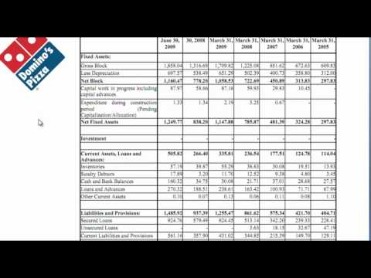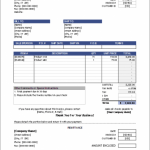
This helps give insight into how much profit or loss is being made within a certain time period. Ledgers also provide the ability to enter financial transactions so that they may be posted up into various accounts. For example, if the business owner needs to know the total amount of purchases relating to a specific accounting period, it will be difficult to find this information in the journal. Additionally, not all plans offered by the same accounting company include general ledgers. For instance, unlike FreshBooks’ higher-tier plans, its cheapest plan (FreshBooks Lite) doesn’t include double-entry accounting. While you can definitely track income and expenses with FreshBooks Lite, you can’t break down transactions by account and you won’t have a general ledger to reconcile.
General Ledger Reconciliation Process
Accounts Receivable is most commonly used as a General Ledger Control Account. In other words, you get a clear view of your business’s capacity to generate profits https://www.personal-accounting.org/ and the resources you have to meet outsider’s claims. Now this journal entry would be transferred to respective Ledger Accounts in the following way.
Why Do I Need a General Ledger Template?
Enter each transaction date, account type, general ledger account name and number, vendor or client name, and debit or credit figures. View transactions in a month-by-month, quarterly, or annual view for easy and accurate financial reporting. The GL accounts will act as a list of all transactions involving that specific account. These entries will correspond with the company’s journal entries– which record all increases and decreases to accounts.
How To Create a General Ledger

Build failproof processes that help you keep track of financials, compliances and more. It is very important to have robust data backup and security processes to ensure all sensitive information is safe and not at all in jeopardy. This is where you should get an independent auditor to help you conduct periodic audits of the GL to verify whether all data is accurate. From multiple office equipment to patents, the Asset Ledger is where you keep a record of all assets.
Hence, such an investigation helps you to avoid looking for errors later. Furthermore, such a comparison becomes a lot easier with an online accounting software like QuickBooks. This is done by comparing balances appearing on the Ledger Accounts to the original documents like bank statements, invoices, credit card statements, purchase receipts, etc. Thus, your Sales Ledger tracks detailed information about goods sold to your customers. Therefore, a General Ledger helps you to know the ultimate result of all the transactions that take place with regards to specific accounts on a given date.
What is the purpose of an accounting ledger?

Finance Strategists has an advertising relationship with some of the companies included on this website. We may earn a commission when you click on a link or make a purchase through the links on our site. All of our content is based on objective analysis, and the opinions are our own.
- For example, if the business owner needs to know the total amount of purchases relating to a specific accounting period, it will be difficult to find this information in the journal.
- For example, the asset accounts could contain cash in hand, cash in the bank, accounts receivable, prepaid expenses, real estate, machinery, inventory, and more.
- A financial professional will offer guidance based on the information provided and offer a no-obligation call to better understand your situation.
In these circumstances it is common to split off sections of the main ledger into separate subledgers. Only the final three columns debit, credit, and balance include monetary amounts. For this reason the format shown is referred to as a 3 column general ledger. For this reason the ledger is sometimes known as the book of final entry or the book of secondary entry. A sales ledger is a detailed list in chronological order of all sales made. This ledger is often also used to keep track of items that reduce the number of total sales, such as returns and outstanding amounts still owed.
It is helpful to remember that revenue, expenses and dividend accounts are zeroed out at the end of the accounting period since they are temporary. The general ledger or (“GL”) as most accountants call it, is a database that stores every individual transaction and journal entry. Accounts receivable (AR) refers to money that is owed to a company by its customers.
In double-entry bookkeeping, each transaction will affect at least 2 accounts. It records and organizes all payment activity between https://www.business-accounting.net/how-to-calculate-depreciation-expense-for-business/ your business accounts. You need a general ledger to show you the big picture of your business’s finances and growth.
This is because General Ledger Accounts records transactions under various account heads. Further, it provides detailed information with regards to such accounts. Furthermore, at the end of the accounting period, you close these Ledger Accounts. You do this as a result of balancing the debit and the credit sides of such accounts. Thus, a purchase ledger helps you to keep a track of the purchases your business entity makes. This way you can make sure that you have enough purchases for the smooth manufacturing of the products.
Accounting ledgers are an essential aspect of small business bookkeeping. As a small business owner, you need to be aware of all the transactions your business has completed in an accounting period. In the following article, we will explore more about general ledger accounting, and how you can use FreshBooks software to simplify your bookkeeping as you track your company’s finances. As a document, the trial balance exists outside of your general ledger—but it is not a stand-alone financial report.
For example, it may also contain details like a reference number or activity type for each transaction. This guide will give you the information you need to interpret it, including what details it contains, its role in the double-entry accounting system, and some practical examples of how it works. Double Entry Bookkeeping is here to provide you with free online information to help you learn and understand bookkeeping and introductory accounting.

Thus, you need to check the balances for balance sheet accounts like assets, liabilities, and stockholder’s equity. A general ledger is the foundation of a system employed by accountants to store and organize financial data used to create operating lease definition the firm’s financial statements. Transactions are posted to individual sub-ledger accounts, as defined by the company’s chart of accounts. A ledger provides users with the ability to keep track of their financial transactions.
This stores everything between depreciation, disposals, and asset management. That means it has a unique tag attached, which tells you where a specific book belongs and helps you find precisely what you are looking for. A General Ledger or GL code is a unique alphanumeric string assigned to every financial entry in an organization’s ledger. Expenses consist of money paid by the business in exchange for a product or service. Thus, you can easily find information like a sales transaction, purchase transaction, etc. in a General Ledger.



現在就與我們聯絡
專人為你評估最合適方案